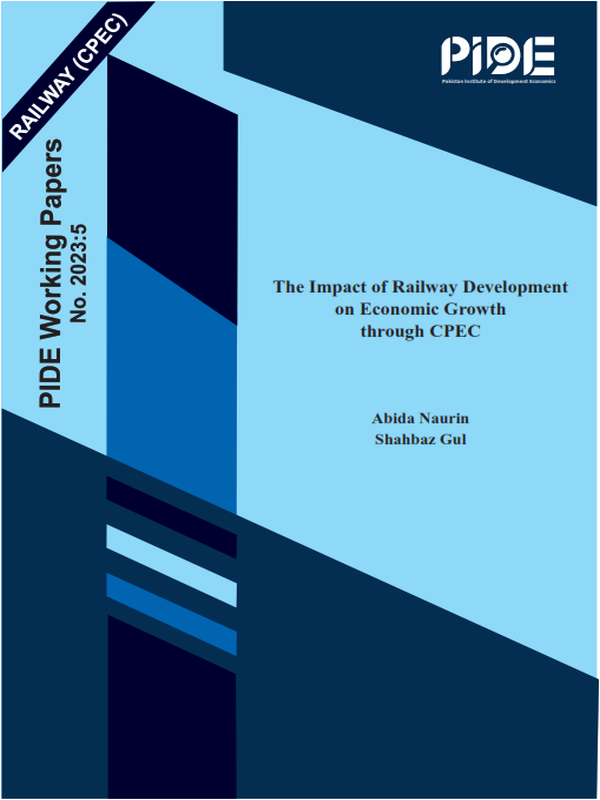
Pakistan Institute of Development Economics
- Home
Our Portals
MenuMenuMenuMenuMenuMenuMenu - ResearchMenuMenuMenuMenuMenuMenuMenu
- Discourse
- The PDR
- Our Researchers
- Academics
- Degree Verification
- Thesis Portal
- Our Portals
The Impact of Railway Development on Economic Growth through CPEC
ABSTRACT
Transportation is one of the key ingredients used to enhance economic development. An effective railway system is essential to enhance trade and rural development and helps reduce transportation costs. One of the main objectives of CPEC (China-Pakistan Economic Corridor) is to improve transportation facilities in Pakistan, with US $8.6 billion allocated for improving Pakistan Railways (PR), indicating that a robust railway network is an essential pillar of CPEC. The current study aims to introduce railways as an industry and highlight the importance of PR in CPEC and the importance of its Gross Earning (GE) and Human Development Index (HDI) impact on economic growth from 1981 to 2019. The study also utilises the World Development Indicator, the Ministry of Railways, and the Economic Survey of Pakistan for time-series data. To make an empirical analysis, the study uses Vector Error Correction Model (VECM) to forecast better-developed railway infrastructure with economic growth. Johansen’s (1988) maximum likelihood method is applied for the existence of a cointegration relationship among the variables in this study. The empirical results show a significant impact of CPEC on Pakistan’s railway network. The effect of GE through railways and HDI on the economic growth of Pakistan has been positive and statistically significant at a 5 per cent significance level. As with other countries, Pakistan should also focus on high-speed trains and other technology-based ticket generation systems, such as Bluetooth, RAFID ticket generation system and ticket generation through QR-code. A computerised booking system for passengers, luggage and parcels is also required to reduce corruption in freight trans-shipment.



